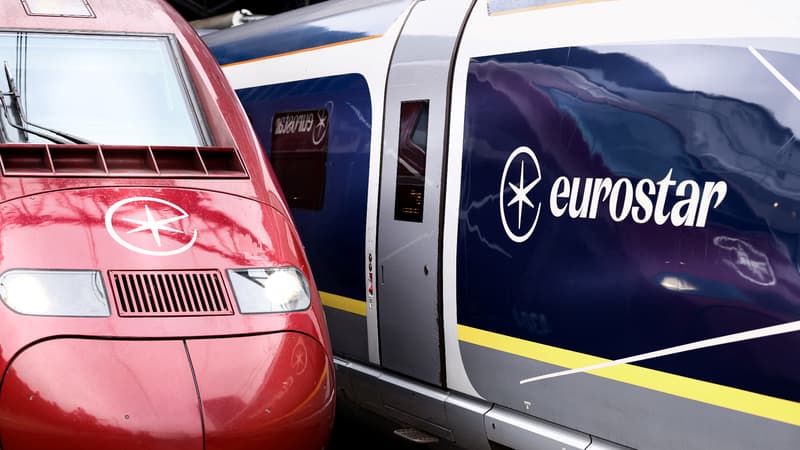Another nightmare day for Eurostar passengers this Thursday. The 8:16 a.m. train between London and Amsterdam broke down just forty minutes after its departure.
The train and its 700 passengers were trapped at the entrance to the Channel Tunnel due to a fallen cable that deprived the train of power. After more than seven hours of blackout, passengers were finally left without power, food, and working bathrooms.
The train finally arrived in the British capital at the end of the day, a breakdown that caused a series of major delays and even cancellations at all the network’s departure stations (Paris, Brussels, Amsterdam and London).
Eurostar, a subsidiary of SNCF, gave some explanations to justify the response time.
“Due to a complicated situation due to the position of the train and the track infrastructure, we had to follow certain safety procedures before we could move the train.”
Problem, it is clear that incidents on the Eurostar are recurrent and, above all, they take a long time to resolve.
Numerous massive blackouts
On November 22, an intrusion on the platform at the Gare du Nord in Paris caused numerous delays.
In June 2018, traffic was completely disrupted for several hours in both directions due to a power outage.
In August 2022, 400 passengers were stranded for several hours under the English Channel due to a breakdown before being evacuated through the service tunnel.
But this is nothing compared to the chaos of 2009, when five trains broke down due to the cold and snow: 2,400 travelers were trapped in the tunnel. Finally they will be evacuated, after some of them spending more than 13 hours on their train. Subsequently, traffic was interrupted for 4 days, for the first time.
By the end of 2022, the same causes had led to approximately the same effects: more than 2,000 passengers on several trains were stranded in the tunnel due to the cold wave. For three days traffic was interrupted.
Why so much chaos when there are breakdowns?
Problem of lack of personnel and equipment?
During the major winter breakdowns of 2009 and 2022, the Eurotunnel representative unions did not fail to highlight the chronic lack of staff and maintenance resources, which has mechanical effects on the efficiency of the trains in circulation.
We wonder how the snow and cold could have caused such malfunctions in 2009 and 2022. “Your explanation cannot be based on a few snowflakes and temperature variations, although we have a lot of experience with them,” he is surprised. Cheminotas.
False, replied Eurostar, which highlighted particular weather conditions, in particular “exceptionally fine powder snow”, which “accumulated in the engine compartments” and “suddenly condensed upon entering the tunnel”, where it is warmer, thus blocking ventilation systems.
In the tunnel, difficult to evacuate passengers.
When a train is stuck in the tunnel, given the specific configuration of the site, the delays for a rescue train to arrive are much longer than on the traditional network.
And when it is impossible to bring a rescue train (or a Getlink shuttle), the evacuation of passengers will have to be carried out on foot through the service tunnel, which can take several hours.
Fry between Getlink and Eurostar
Getlink (formerly Eurotunnel) is the owner and operator of the Channel Tunnel, while Eurostar is a rail operator that operates the line for a fee. In the event of an incident, communication between both entities is essential.
However, this is not always the case. During the 2009 blackout, Getlink heavily criticized Eurostar’s procedural errors.
In a statement, the manager noted that evacuation times “were prolonged because the railway company crews, in total violation of emergency procedures, asked passengers to take their luggage.”
Getlink also denounced the lack of information provided to passengers, a recurring criticism from travelers in the event of an incident.
“Although they are in continuous contact with our teams, it is clear that the Eurostar crews have not passed on useful information to passengers,” Getlink said.
And obviously, the communication channel still seems interrupted since the travelers of the train that broke down this Thursday criticized the same lack of information.
“I think the staff themselves are very stressed and I don’t think they are very well informed,” a passenger on this train complained to the BBC yesterday. “It really feels like we are in an emergency situation, but there is no communication from the staff.”
After this type of major breakup, the two entities continue to pass responsibility for causes and consequences to each other. We are improving to move forward.
The Channel Tunnel network is specific and sensitive because it covers several countries and is subject to strong security requirements, in particular with Great Britain which, remember, is no longer part of the European Union. Without forgetting the terrorist risk that further reinforced these measures.
When an incident occurs in or near the station, or near the tunnel, in what Eurostar calls “sterile zones”, safety procedures are numerous and strict. For example, the operator must inspect all trains before authorizing departures.
More trains and therefore more incidents?
Getlink has invested heavily and carried out significant work to be able to move more trains through the tunnel. Several players have already positioned themselves and soon Eurostar’s monopoly on passenger traffic will be challenged.
But increasing the number of trains means increasing the risks. The question of the maintenance and reliability of these new actors who, by definition, are part of a particular network, will therefore be fundamental.
Source: BFM TV


